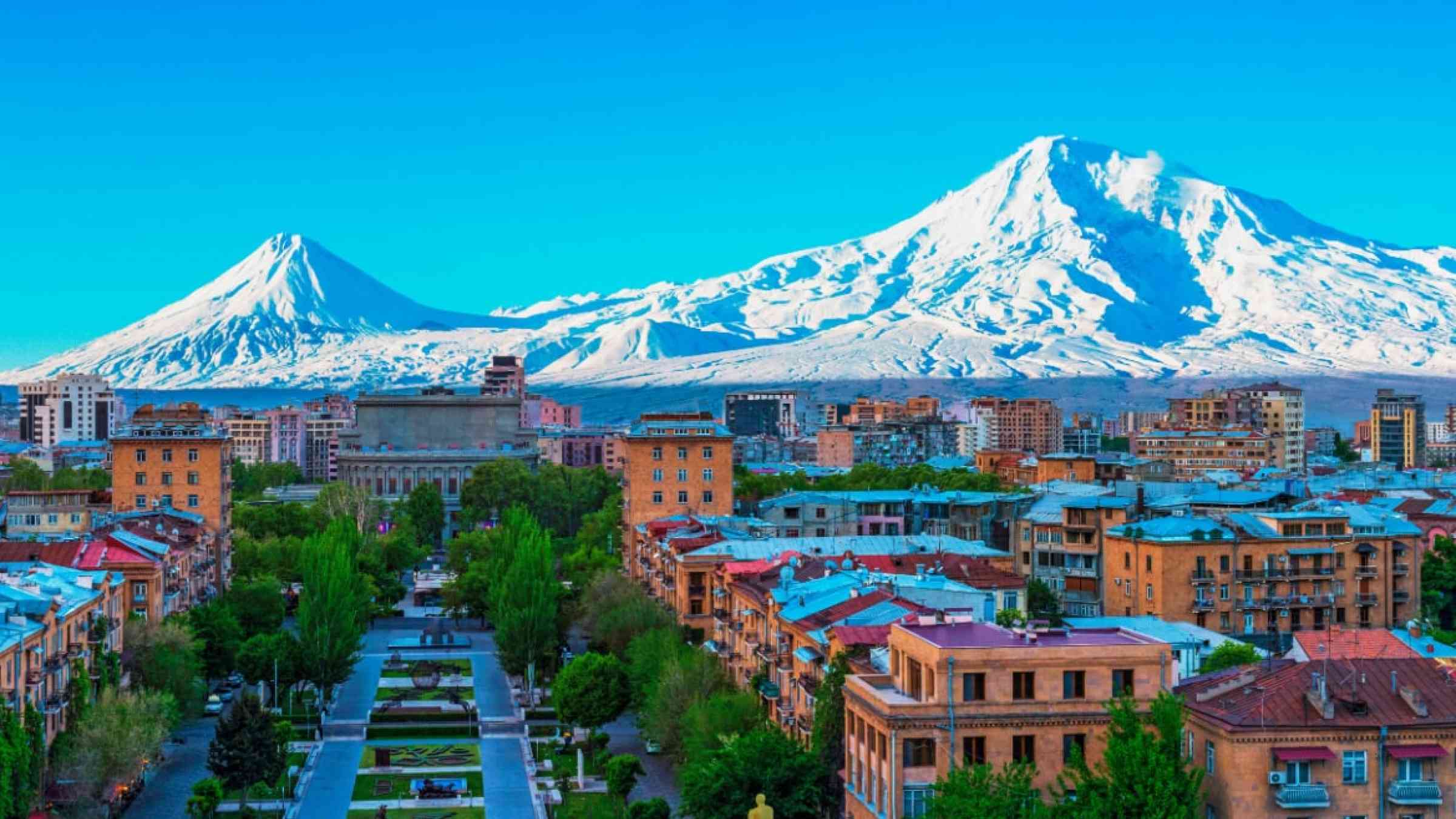Four ways to make Armenia’s transport network more resilient

Armenia faces a growing need to adapt its infrastructure to withstand severe climate events and maintain crucial trade routes. Enhancing resilience through modern engineering practices and strategic investments is vital for the country's economic stability and growth.
Recently, a severe rainstorm struck the northern Armenian provinces of Lori and Tavush. In less than 48 hours, the affected regions received half their annual average rainfall. Rivers swelled to levels not seen in 65 years. Sadly, four people died, and hundreds had to evacuate.
In addition to impacting people and businesses, the flooding damaged critical infrastructure. Power stations were flooded and mobile towers impaired, causing service interruptions. Surging rivers destroyed or damaged over 20 bridges, leaving some rural communities stranded.
One of the most noticeable areas of damage was to the railway lines. In some places the water tossed tracks about like toys.
Even the M6 highway, which was designed and built to a high standard of climate resiliency, sustained damage along two 200-meter stretches.
The repair of this damaged infrastructure not only creates a fiscal and administrative burden, it disrupts Armenia’s connection to the world. Because of the rain, Armenia had to temporarily close its border and railway crossing at Bagratashen.
The Georgian border is especially important because it hosts as much as 80% of Armenia’s trade. It provides access to the sea and Russia, Armenia’s largest trading partner, and allows necessities to transit, including agricultural goods, oil, and pharmaceuticals.
To ensure that this access remains unimpaired, particularly in a world of rising temperatures, changing precipitation patterns, and geopolitical uncertainties, Armenia needs to take four steps.
First, comprehending the essence of climate change will help Armenia stay ahead in the evolving landscape of transport connectivity, which is intrinsically linked to trade competitiveness and economic advantages.
As Armenia and other nations grapple with the aftermath of climate disasters, it's clear that events like the recent floods will not be isolated incidents. Governments and communities must prepare for more frequent and severe weather events.
A proactive approach is essential. Learning about and understanding likely climate scenarios, their potential impacts on Armenia’s economy and population, and identifying the vulnerable sections of transport corridors is the best starting point.
There are many competing demands on Armenia’s resources. However, as the flooding in May 2024 demonstrated, accounting for climate change and its impact on infrastructure and building resiliency into Armenia’s transport networks, through both physical and political investments, must remain a priority to ensure continued economic growth.
Second, the recent flood is a stark reminder of the urgent need for enhanced infrastructure resilience and comprehensive climate adaptation strategies.
A transport corridor with the capacity to handle extreme weather will be more attractive than less resilient alternatives. To increase transit trade, Armenia must offer a more robust transport corridor than it has in the past, and one that surpasses other available routes.
This calls for the active introduction of modern engineering practices such as resilient roadway structures and materials, upgraded drainage systems, and enhanced slope and riverbank protection measures to prevent or minimize damage by climate disasters.
Additionally, incorporating real-time, or near real-time monitoring systems to track weather conditions and the condition of transport infrastructure can facilitate rapid response to emerging issues while optimizing the maintenance and rehabilitation schedule.
Third, incorporating redundancy at the transport network level is crucial for responding inclusively to most disasters triggered by climate and other causes. Redundancy, particularly around the climate vulnerable sections, ensures that there are multiple alternatives available if primary routes are disrupted by floods, landslides, storms, or other catastrophic events.
This approach minimizes the risk of complete isolation and maintains critical connectivity for emergency services, supply chains, and everyday travel. By establishing backup routes and alternative modes of transportation, communities can better withstand and quickly recover from disruptions, ensuring sustained functionality and resilience.
Fourth, access to markets can be substantially enhanced with the conclusion of a peace agreement that can facilitate the opening of Armenia’s two closed borders.
An Asian Development Bank analysis from 2021 estimated that if the railway corridors that existed during the Soviet era were reopened, an estimated 5 million tons per year of trade would flow through them. This resumption of trade could happen with relatively modest investment in physical infrastructure and would be a near-immediate win for the Armenian economy.
Longer-term, the “Crossroads of Peace” initiative not only provides for greater potential economic integration and cooperation between Armenia and its neighbors but would also integrate Armenia into transnational projects, such as the “Middle Corridor” that links Asia to Europe.
The more open Armenia’s borders and the more varied its regional transport links, the less exposed the economy is to the closure of any single road or other infrastructure due to climate-change induced flooding or other disruptions.
There are many competing demands on Armenia’s resources. However, as the flooding in May 2024 demonstrated, accounting for climate change and its impact on infrastructure and building resiliency into Armenia’s transport networks, through both physical and political investments, must remain a priority to ensure continued economic growth.